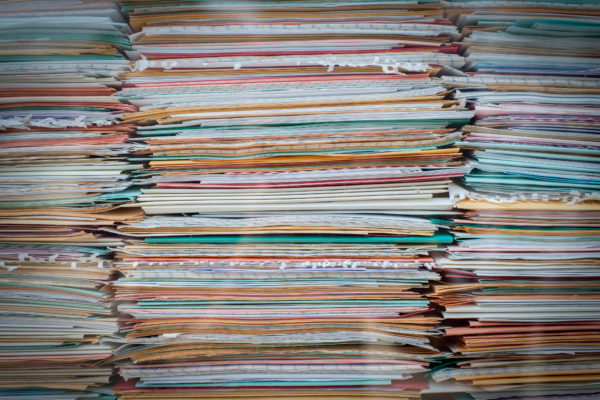Nonprofits large and small must strategically marshal resources to ensure that they have staff, resources and capacity to accomplish their goals. Such challenges are magnified when nonprofits take on systems change work where powerful opponents are arrayed against them. Often under-resourced and outgunned, nonprofits need strategic philanthropic support to punch above their weight.
At FJC – A Foundation of Philanthropic Funds, we have worked with imaginative donors to structure revolving accounts (essentially, variations on Donor Advised Fund accounts) with a goal of empowering nonprofits to take on significant campaigns and projects.![]() Such arrangements can be incredibly catalytic, giving nonprofits the confidence to move forward on complex projects while mitigating financial risk. Also, by prioritizing activities with a high likelihood of recovery, these structures create the potential for donors to amplify their impact, revolving their funds so that the same philanthropic dollar can have multiple impacts on multiple projects.
Such arrangements can be incredibly catalytic, giving nonprofits the confidence to move forward on complex projects while mitigating financial risk. Also, by prioritizing activities with a high likelihood of recovery, these structures create the potential for donors to amplify their impact, revolving their funds so that the same philanthropic dollar can have multiple impacts on multiple projects.
Revolving Funds in Practice with SELC
A case in point is our work with the Southern Environmental Law Center (SELC), a 35-year-old nonprofit organization active across six states. As a regional leader, SELC occupies the space between the large, national (and often well-resourced) environmental nonprofits like the Sierra Club and Natural Resources Defense Council, and local, grassroots groups often run by dedicated volunteers. This enables SELC to engage effectively on the local, state, and federal level, always informed by the players, politics, landscapes, and communities in this pivotal region.
To achieve their mission, SELC uses a broad array of law and policy approaches including strategic litigation which can be expensive and resource intensive. Some of SELC’s high-stakes legal battles continue on for years, a decade, or more. In addition to requiring tens of thousands of hours from SELC staff, such cases require the paid services of outside experts. Very often it is scientific or economic arguments that win the day.
Enter an anonymous donor at FJC. The donor worked with FJC to create an account where charitable grants to SELC are deposited and from which SELC can draw funds specifically to pay for direct litigation expenses (like expert fees) in potential fee-recovery cases. Periodically, when SELC wins a case and recovers attorney fees, they make a deposit back into the FJC fund to replenish it in the event of future need. To date, SELC has drawn approximately $1 million from the revolving fund to pay for professional experts and other direct litigation expenses. With an incoming payment of fees recovered from SELC’s landmark Atlantic Coast Pipeline litigation, SELC will have redeposited some $270,000 back into the fund.
The Critical Role of Experts in Nonprofit-Led Litigation
One of the most dangerous threats to water quality in the U.S. comes from toxic coal ash, a waste product of coal-fired power plants. Utility companies typically dispose of their coal ash by mixing it with water and sluicing it into unlined pits constructed on the banks of streams, rivers, and lakes, where the toxic materials seep into surface waters and groundwater, often contaminating drinking water.
Through a combination of litigation, organizing, and legislative advocacy, SELC has addressed this pervasive environmental threat with great success. When SELC began their coal ash cleanup work in 2014, no utility company had committed to excavating a single coal ash pond. Today, utilities in six southern states are slated to excavate 255 million tons of this toxic waste, including all major sites in the Carolinas and the Atlantic coastal region. SELC and its local coalition partners relied on a number of methods to pursue their strategy, but successful litigation was a key element.
Winning citizen enforcement cases against some of the biggest utilities in the country was no small feat. In one such case, SELC and its clients squared off against Dominion Energy, a Fortune 500 company that generates and delivers electricity in twenty states. As SELC Deputy Director John Suttles explained, “During the coal ash litigation we were facing dozens of lawyers, not to mention in-house experts and consultants-for-hire.”
Suttles recalls the day when SELC’s own expert hydrogeologist presented his findings and analysis in the first federal coal ash enforcement case to go to trial in the US. For three-and-a-half hours, the expert fielded questions from lawyers both for the plaintiff and the defense, ultimately convincing the judge of the merits of SELC’s case. “There was a lot of high-level lawyering in this case. We had to overcome motions to dismiss and conduct intensive discovery on a very compressed timeline. It all was important and challenging, but we could not have convinced the judge that arsenic was leaching into river without that expert.”![]()
Empowering Organizations to Take on Big Initiatives
Having a donor provide dedicated resources for expert witnesses can be essential for a nonprofit like SELC, because it enables the organization to direct their resources toward other critical needs. The organization undertakes an annual budgeting and planning process that outlines priorities for the year. The process is informed by the resources the organization can reasonably expect to raise.
“Knowing that we have dedicated resources for expert testimony allows us to mount these complex cases with confidence,” says Marie Hawthorne, SELC Director of Advancement. The budget for expert consultants is modest compared to SELC’s internal costs; John Suttles estimates the organization spends five dollars on their own internal costs for each dollar they spend on expert witnesses. In cases like the coal ash litigation, however, this expertise can make or break a case.
Hawthorne continues, “When you’re litigating complex cases against companies like Duke Energy, Dominion Power, and the Southern Company, you need to marshal staffing to wage a pitched campaign and have the financial resources to be able to stay in it for the long haul.” The sustained generosity of the anonymous FJC donor and the revolving litigation fund give SELC’s legal team the confidence and staying power they need.
SELC cites the example of another campaign against the Atlantic Coast Pipeline, for which they filed eight coordinated federal lawsuits on behalf of local and national organizations challenging permits issued for construction of the pipeline. Litigation was a key component in this multifaceted campaign that also included strategic communications and advocacy before state and federal commissions and legislatures. Working in coordination with dozens of local partners, the legal advocacy and communications campaign highlighted significant environmental risks and environmental injustices. Litigation halted construction of the pipeline for almost three years and raised significant uncertainty about the legal viability of the project. When the utility ultimately abandoned the project nearly three years after its initial approval, only six percent of the project was complete.
Applying Revolving Funds to Other Nonprofit Fields
FJC has arranged a number of specialized revolving funds among legal nonprofits, each set up to fund work with a high likelihood of recovery. Funds have supported defense of whistleblowers with the Government Accountability Project, voting rights cases with the New York Civil Liberties Union, and bail funds for immigrants at risk for deportation with Brooklyn Community Bail Fund.
The initiatives vary in terms of how likely they are to enable the funds to recycle. SELC notes that even their highly successful litigation work never recovers all of their expert witness expenses and courts set reimbursement at “pennies on the dollar.” Community bail funds, on the other hand, generally have very high repayment rates, allowing the funds to recycle multiple times.
But many other areas of the nonprofit sector can benefit from revolving funds that can address on-going resource needs. In the affordable housing sector, nonprofit developers are often at a disadvantage when competing against deep-pocketed real estate developers. Successfully acquiring a development site often depends on the ability to move quickly and put down a deposit to purchase a property. These deposits, usually 10% of the purchase price, can run into the hundreds of thousands of dollars and they can put a significant investment of a nonprofit’s reserve fund at risk. A number of affordable housing nonprofits are exploring the feasibility of structuring dedicated revolving funds with major donors, which are reimbursable when a project goes into construction.
Another use case for philanthropic revolving funds is bridging nonprofits’ operational cash flow. Take the example of Brighter Tomorrows, a Long Island-based nonprofit working with victims of domestic violence to provide shelter, counseling, and legal advocacy. A longtime donor of the organization noticed how much time Executive Director Dolores Kordon spent managing cash flow due to slow payments on the organization’s state contracts. The donor’s solution was to work with FJC to set up cash in a Donor Advised Fund account as a 0%-interest revolving loan, easing Brighter Tomorrow’s cash flow burden and allowing the organization to avoid financing costs that would have accompanied a traditional bank line of credit.
As impact investing becomes further mainstreamed among foundations and holders of Donor Advised Funds, imaginative donors should consider recoverable grants and revolving fund structures as an additional tool in their continuing philanthropy.![]() A fundraising campaign around this type of fund may engage donors that wish to invest in the organization’s growth and capacity while simultaneously compelling donors who would find value in seeing significant, multiple impacts over a long period of time as a result of a one-time gift. Revolving funds like the one FJC set up for SELC may not necessarily have the potential to grow their assets, but by covering organization expenses with a likelihood of recovery, they enable savvy donors to recycle the same philanthropic grant dollars multiple times for multiple projects. DAF sponsors can support donors by offering an understanding of the unique needs of the nonprofit sector and guiding grantmaking toward recoverable instruments with the highest impact.
A fundraising campaign around this type of fund may engage donors that wish to invest in the organization’s growth and capacity while simultaneously compelling donors who would find value in seeing significant, multiple impacts over a long period of time as a result of a one-time gift. Revolving funds like the one FJC set up for SELC may not necessarily have the potential to grow their assets, but by covering organization expenses with a likelihood of recovery, they enable savvy donors to recycle the same philanthropic grant dollars multiple times for multiple projects. DAF sponsors can support donors by offering an understanding of the unique needs of the nonprofit sector and guiding grantmaking toward recoverable instruments with the highest impact.
Sam Marks is CEO of FJC- A Foundation of Philanthropic Funds. You can follow him and FJC on Twitter at @smarksnyc and @FJC_Foundation.




